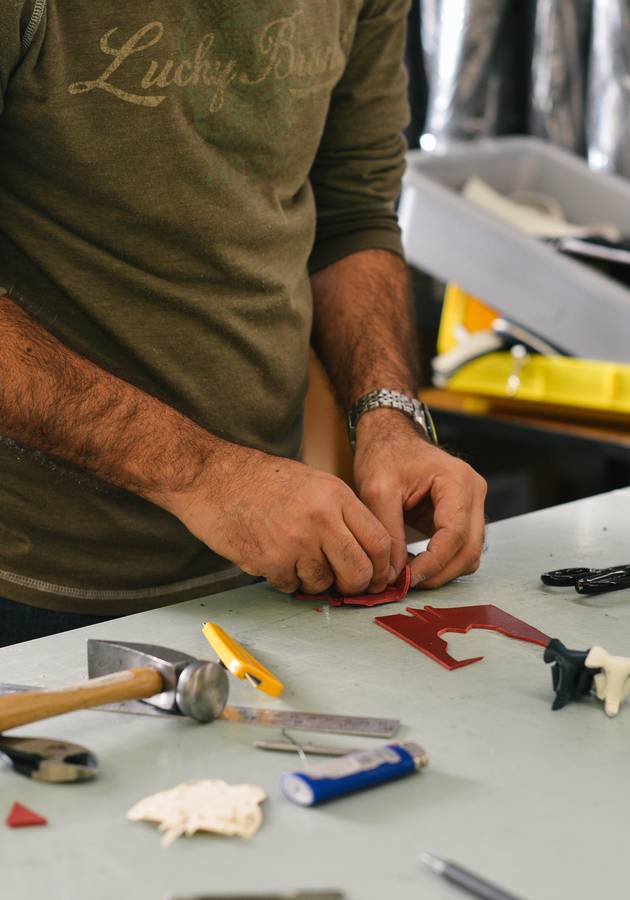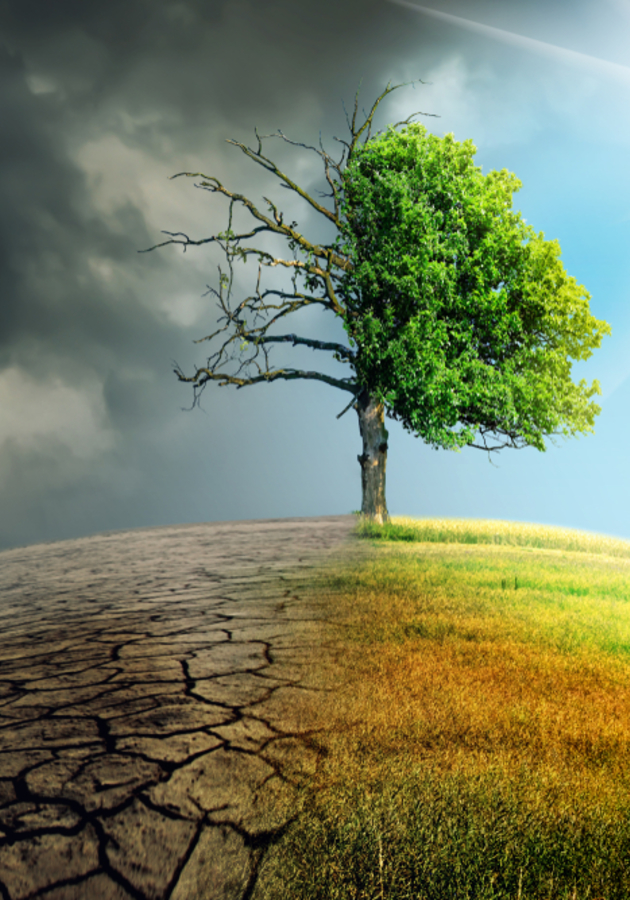There are two types of people in the world: those who revere the work and legacy of Rick Rubin, and those who know little or nothing about modern music. An immensely influential record producer, Rubin has won multiple Grammy Awards for his work in the music industry, having produced dozens of landmark albums for a diverse array of artists, including the Beastie Boys, Run-DMC, LL Cool J, Red Hot Chili Peppers, Slayer, Johnny Cash, Tom Petty, and Adele, among others.
Published in January 2023 by Penguin Press, “The Creative Act” is his debut book. It was meant to be a work “about what to do to make a great work of art.” Instead, in Rubin’s words, “it revealed itself to be a book on how to be,” covering 78 motley (but intricately related) “areas of thought.” So, get ready to explore Rubin's insights into the creative process and how it relates to personal growth and development.
Tuning in to the source of creativity
As far as Rick Rubin is concerned, creativity is not a rare ability reserved for the few, but rather a fundamental aspect of being human that everyone possesses. Creativity is our birthright, Rubin claims, explaining that we are all, even in our most ordinary state of being, creators of some sort. Hence, tapping into this innate source is not a matter of acquiring a special talent or skill, but rather of recognizing and cultivating the creativity that is already within us. That said, there are some people in this world who consciously choose to foster their originality and imagination and seek out ways to develop it further. They are what we call artists. “The Creative Act” is primarily about them and their way of being.
Plato, the foremost originator of Western intellectual thought, saw the artist as a sort of a psychic, a humble transmuter of messages between the realms of the gods and the people. Similarly, Rubin sees the artist as someone in touch with what he calls the Source, that is, the “wisdom surrounding us, an inexhaustible offering that is always available.” Put otherwise, you can think of the artist as someone able to draw down the rhythms of the world, transmute them into something more legible, and then share it with the world. “We are all translators for messages the universe is broadcasting,” Rubin writes. “The best artists tend to be the ones with the most sensitive antennae to draw in the energy resonating at a particular moment.”
A great way to understand this idea is by way of a famous Michelangelo anecdote. The story goes that the great Renaissance artist was once asked how he created his magnificent sculptures. In response, he allegedly said, "I saw the angel in the marble and carved until I set him free." The anecdote highlights the idea that the creative act is not so much about inventing something entirely new, but rather about uncovering what already exists within the raw materials or ideas that one is working with. It emphasizes the importance of the artist or creator's ability to see the potential in their materials and bring it to life, rather than imposing their will on it. “Art is a circulation of energetic ideas,” quips Rubin. “What makes them appear new is that they’re combining differently each time they come back.”
Being aware and looking for clues
Even though artists are often thought of as people who create something out of nothing, the truth is that creativity is all about awareness and observation. By paying close attention to the world around you, you can start to see patterns, connections, and ideas that others might overlook. These observations can then be transformed into something new and beautiful.
For example, a painter might be inspired by the colors and shapes of the natural world, while a musician might find inspiration in the sounds of the city. A writer might be moved by the stories of the people they meet or hear chatting on the bus, and a sculptor might be stirred into creation by the textures and shapes of the materials they work with. Whatever your medium, there are clues all around you that can inspire and inform your work.
The problem is, in addition to clues, there is also a lot of noise, which makes being aware quite a difficult task. It takes practice and discipline to cultivate a keen eye and a receptive mind. It also requires a willingness to be open to new experiences and to see the world from different perspectives. But with time and effort, you can learn to see the world in a new light, and to use that vision to create something truly unique.
“As artists,” writes Rubin, “we seek to restore our childlike perception: a more innocent state of wonder and appreciation not tethered to utility or survival… The more raw data we can take in, and the less we shape it, the closer we get to nature.” And that’s what sets great artists apart from the rest, that’s what allows them to create works of lasting beauty and significance! So, if you want to be a great artist, start paying attention to the world around you. You never know what inspiration you might find.
Don’t follow other people’s rules—follow your own slipups
The English Romantic poets believed that nature is the best teacher, with William Wordsworth famously claiming that “One impulse from a vernal wood/ may teach you more of man,/ of moral evil and of good,/ than all the sages can.” Rubin feels pretty much the same, claiming that the natural world is “unfathomably more rich” than anything humans will ever create. Still, he advises beginners to broaden their awareness and consider submerging themselves in the canon of great works of art. Rather than reading the news, read a poem by Victor Hugo or a short story by Anton Chekhov; rather than watching a Netflix TV show, visit an art museum. Great artists are people constantly craving for beauty. Unless you are relentlessly hungry to see beautiful things and hear beautiful sounds, you are unlikely to become a great artist.
Another thing that great artists know is that most rules are there to be broken. Of course, one can only break rules once they have learned and acquired them, but the Golden Law still stands: question instruction, question conventions, question canons, why, question everything—as long as it is not yourself! In math and physics, rules describe “precise relationships in the physical world.” Meaning, no matter how many times you test Pythagoras’ theorem or Einstein’s theory of relativity, they will always come out true in the end. In art, however, rules are “assumptions, not absolutes.” They are “only of value as long as they are helpful.” Moreover, merely by testing these rules, artists can often discover new possibilities and innovations that push the boundaries of what is considered possible or acceptable. The breaking of rules in art is not an act of rebellion, but rather a natural expression of creativity.
Well, the same holds true for slipups. In math or engineering, slipups can be fatal errors, but in art (as James Joyce said once) they are by and large portals of discovery. Let the Japanese art of repairing broken pottery, kintsugi, be an inspiration. Kintsugi means mending a broken piece of ceramic pottery using lacquer mixed with powdered gold or silver. Rather than being restored to its original condition, the broken piece is transformed into something new and unique. The cracks become a part of the object's history and beauty, a reminder of its resilience and the journey it has gone through. In the same way, artists can turn their mistakes into something beautiful and meaningful. When a mistake happens, instead of getting discouraged or giving up, use it as an opportunity to explore new possibilities and push the boundaries of your creativity. As the saying goes, "mistakes are proof that you are trying"!
Inspiration, and the three phases of the creative process
Philosophers say that if you want to get to the bottom of some concept, a good place to start is its etymology. In the case of the word “inspiration”—that holy grail of creativity—such an exercise immediately takes us back to Ancient Rome, where the verb inspirare meant “to breathe in” or “to blow into.” That, in itself, should tell you a lot more about the nature of inspiration than any book. For just as the lungs must first be emptied to draw in air, the mind must also be cleared out from all negative or noisy thoughts to welcome inspiration. To create something, one must first be comfortable with having no-thing. There must be a space left open for the act of creation to flow into.
In Zen Buddhism, this is known as ‘beginner’s mind.’ The concept involves approaching a situation with an open, curious, and non-judgmental attitude, much like a child encountering something new for the first time. It is a mindset that Zen Buddhism places great emphasis on, believing that it is only by emptying our minds of preconceptions that we can truly see things as they are, rather than how we think they should be. In the context of art, having a beginner’s mind means being receptive to new ideas, even if they challenge our existing beliefs and techniques. It means being willing to experiment and take risks, even if it means making mistakes or failing. It means approaching our work with a sense of playfulness, rather than rigidity or perfectionism.
That’s the first phase of the creative process, which Rubin calls the Seed phase. At this stage, you’re completely open, simply gathering things, be they a phrase, a bass line, or a shade of a certain color. After accumulating several weeks’ or months’ worth of seeds, you should be able to know which of them to focus on. Just like in the case of Michelangelo, your work will reveal itself to you, as you go. Once that happens, it’s time to move to stage number two, and start interacting with the best of the seeds. This stage, called Experimentation, is the most fun part of the creative act—there are no rules, nothing is at stake, and conclusions are stumbled upon. Once they come, however, it’s time to move on to the third and final stage—Crafting.
Crafting, admittedly, is neither glamourous nor creative, but it’s nevertheless essential because it’s what frees the proverbial angel from the lumpy stone, what gives form to the plant that your seed (in theory) has been from the very start. In Rubin’s words, crafting can be a daunting task, as it “often carries less of the magic of exploration and more of the labor of brick-laying.” After all, it’s always more fun to produce a draft than a finished piece! But, your piece must come together and take its final shape, must be polished until it achieves its full potential. This requires patience, discipline, and attention to detail, as well as a willingness to let go of what isn’t working and make difficult decisions. It’s also important to know when to stop, as overworking a piece can lead to diminishing returns and a loss of its original energy and spontaneity.
Final notes
“The Creative Act” by Rick Rubin is prefaced by the following epigraph by American painter Robert Henri, “The object isn’t to make art—it’s to be in that wonderful state which makes art inevitable.”
In many ways, that’s the object of this book too. “The Creative Act” isn’t a set of rules or guidelines, but a general invitation to explore the creative process and to tap into the wellspring of creativity that resides within each of us.
To tell you the truth, we expected a bit more from Rubin’s debut work. But, he treats us with another book, this will have to do.
12min tip
Whenever you suffer from a creative block, try to look for random clues. For example, choose haphazardly a book from your shelves and open it to a random page. Then start reading the first line your eyes find. Try to find some relevance to your life. There’s your inspiration! Art is a lot about chance—and magic—too.





























